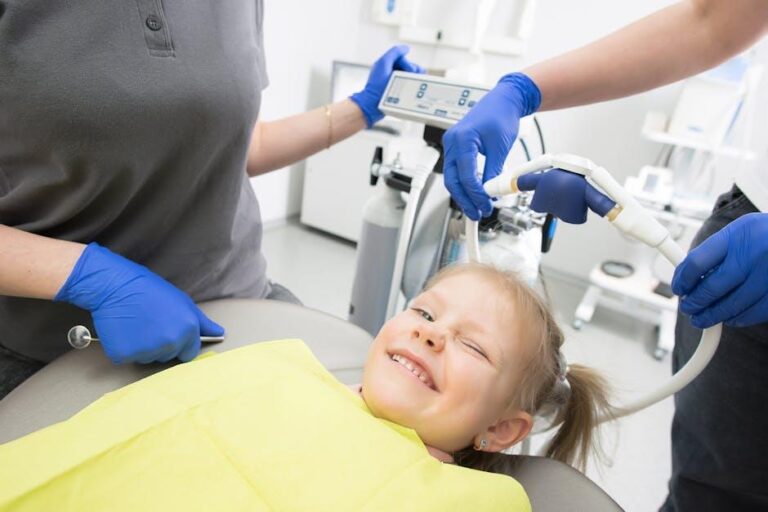1 in 3 Kids Has Dental Problems, Poll Finds – U.S. News & World Report
Dental health remains a critical component of overall well-being, especially for growing children. A recent poll highlighted by U.S. News & World Report has revealed a concerning statistic: 1 in 3 kids in the United States suffers from dental problems. This alarming finding sheds light on the urgent need for enhanced pediatric dental care and awareness among parents and caregivers. In this in-depth article, we explore the causes of childhood dental problems, prevention tips, and practical steps families can take to improve their children’s oral health.
Understanding the Poll: What Does the Data Say?
The poll conducted across various U.S. regions surveyed parents and guardians about their children’s dental health status. Key findings include:
- 33% of children reported to have at least one form of dental problem, such as cavities, gum disease, or tooth sensitivity.
- A significant percentage of these cases were left untreated or addressed late.
- Children from low-income households had a notably higher incidence of dental issues.
Dental Problems Among Kids: Common Issues Reported
| Dental Problem | Percentage of Affected Kids | Impact |
|---|---|---|
| Tooth Decay (Cavities) | 25% | Pain, infection risk, difficulty eating |
| Gum Disease (Gingivitis) | 10% | Inflammation, bleeding gums, bad breath |
| Tooth Sensitivity | 8% | Discomfort to hot/cold foods |
| Orthodontic Concerns | 7% | Misaligned teeth, bite issues |
Why Are So Many Children Experiencing Dental Problems?
Several factors contribute to the high prevalence of dental problems among kids in the United States:
- Dietary Habits: High consumption of sugary snacks and beverages promotes tooth decay.
- Poor Oral Hygiene: Inadequate brushing and flossing habits reduce the natural defenses against plaque buildup.
- Lack of Regular Dental Visits: Many children do not receive routine dental checkups due to accessibility or financial constraints.
- Parental Awareness: Some parents underestimate the importance of pediatric oral care or lack knowledge about proper techniques.
- Socioeconomic Disparities: Economic challenges limit access to dental insurance, preventive care, and restorative treatments.
The Importance of Early Dental Care for Kids
Addressing dental issues early in life can prevent long-term complications and improve a child’s quality of life. Pediatric dental care is essential for:
- Maintaining healthy teeth and gums
- Preventing pain and infection which can affect eating, speaking, and self-esteem
- Establishing lifelong habits for good oral hygiene
- Reducing the risk of costly, extensive dental procedures in adulthood
Practical Tips to Prevent Dental Problems in Children
Parents and caregivers have a critical role in fostering good oral health habits. Here are expert-recommended tips to help prevent dental problems in kids:
- Start Early: Clean your baby’s gums with a soft cloth even before teeth appear, then brush as soon as the first tooth erupts.
- Establish a Routine: Brush teeth twice daily using a pea-sized amount of fluoride toothpaste and floss regularly starting around age 3 or when teeth begin to touch.
- Limit Sugary Foods and Drinks: Encourage a balanced diet rich in fruits, vegetables, and water.
- Schedule Dental Checkups: Visit the dentist every six months for preventive care and detection of any problems early.
- Use Protective Gear: Equip children with mouthguards during sports to prevent dental injuries.
Recommended Oral Hygiene Routine for Kids
| Age | Oral Care Practice | Parental Involvement |
|---|---|---|
| 0-2 years | Wipe gums, brush first teeth with infant toothbrush | Full parental cleaning |
| 3-6 years | Brush twice daily, initiate flossing | Parental supervision and assistance |
| 7-12 years | Brush and floss independently | Periodic supervision to ensure technique |
| 13+ years | Maintain routine brushing and flossing, regular dental visits | Encourage responsibility |
Case Study: Turning a Child’s Dental Health Around
Meet Sarah, a 7-year-old girl who struggled with frequent cavities and tooth sensitivity due to a high-sugar diet and inconsistent brushing habits. After her parents became aware of the risks highlighted in recent polls and consulted with a pediatric dentist, they took these steps:
- Reduced sugary snacks and replaced them with fruits and nuts.
- Started a brushing chart with rewards to encourage regular oral hygiene.
- Scheduled biannual dental visits for professional cleanings and fluoride treatments.
Within six months, Sarah’s dental condition improved significantly, showing fewer cavities and healthier gums, emphasizing the power of informed care and prevention.
Firsthand Experiences: What Parents Are Saying
Many parents share that learning about the prevalence of childhood dental issues was eye-opening. Jessica, mother of two, expressed:
“I always thought cavities were just part of childhood, but after reading this poll, I realized how much diet and hygiene affect my kids’ teeth. Now, we brush together and watch sugar intake closely.”
Voices like Jessica’s highlight the importance of education and proactive parenting in combating dental problems.
Conclusion: Prioritize Your Child’s Dental Health Today
The statistic that 1 in 3 kids has dental problems is a call to action for parents, schools, and healthcare providers alike. By understanding the causes, recognizing the signs early, and committing to preventive dental care, families can greatly reduce the risk of oral health issues and promote a lifetime of healthy smiles for their children. Remember, building strong dental habits in childhood paves the way for healthy adult teeth and overall wellness.
Take advantage of regular dentist visits, limit sugary treats, and make brushing fun—it’s never too early or too late to start caring about your child’s dental future.


